Energy Efficient Constellation for Wireless Connectivity of IoT Devices
Abstract
1. Introduction
1.1. Literature Review
1.2. Our Contribution
2. MAP Criterion for Z-BPSK in AWGN Channel
3. Probability of Error
4. Numerical Analysis and Comments
5. Energy Entropy and Energy Capacity
5.1. Entropy
5.2. Capacity
6. Energy Cost
7. Conclusions
Author Contributions
Funding
Conflicts of Interest
Appendix A. Maximum A-Posteriori Criterion
References
- Sheng, Z.; Pfersich, S.; Eldridge, A.; Zhou, J.; Tian, D.; Leung, V.C.M. Wireless acoustic sensor networks and edge computing for rapid acoustic monitoring. IEEE/CAA J. Autom. Sin. 2019, 6, 64–74. [Google Scholar] [CrossRef]
- Zhang, P.; Zhou, M.; Fortino, G. Security and trust issues in Fog computing: A survey. Future Gener. Comput. Syst. 2018, 88, 16–27. [Google Scholar] [CrossRef]
- Stankovic, J.A. Research Directions for the Internet of Things. IEEE Internet Things 2014, 1, 3–9. [Google Scholar] [CrossRef]
- Pan, J.; Jain, R.; Paul, S.; Vu, T.; Saifullah, A.; Sha, M. An Internet of Things Framework for Smart Energy in Buildings: Designs, Prototype, and Experiments. IEEE Internet Things 2015, 2, 527–537. [Google Scholar] [CrossRef]
- Chen, S.; Xu, H.; Liu, D.; Hu, B.; Wang, H. A Vision of IoT: Applications, Challenges, and Opportunities with China Perspective. IEEE Internet Things 2014, 1, 349–359. [Google Scholar] [CrossRef]
- Cheng, J.; Yuan, G.; Zhou, M.; Gao, S.; Liu, C.; Duan, H.; Zeng, Q. Accessibility Analysis and Modeling for IoV in an Urban Scene. IEEE Trans. Veh. Technol. 2020, 69, 4246–4256. [Google Scholar] [CrossRef]
- Duan, Y.; Li, W.; Fu, X.; Luo, Y.; Yang, L. A methodology for reliability of WSN based on software defined network in adaptive industrial environment. IEEE/CAA J. Autom. Sin. 2018, 5, 74–82. [Google Scholar] [CrossRef]
- Farhang-Boroujeny, B. OFDM Versus Filter Bank Multicarrier. IEEE Signal Process Mag. 2011, 28, 92–112. [Google Scholar] [CrossRef]
- Wang, H.C.; Tseng, C.C.; Chen, G.Y.; Kuo, F.C.; Ting, K.C. Accurate analysis of delay and power consumption of LTE DRX mechanism with a combination of short and long cycles. In Proceedings of the 15th International Symposium on Wireless Personal Multimedia Communications, Taipei, Taiwan, 24–27 September 2012; pp. 384–388. [Google Scholar]
- Gupta, M.; Koc, A.; Vannithamby, R. Analyzing mobile applications and power consumption on smartphone over LTE network. In Proceedings of the 2011 International Conference on Energy Aware Computing, Istanbul, Turkey, 30 November–2 December 2011; pp. 1–4. [Google Scholar]
- Zhou, L.; Wu, Y.; Yu, H. A Two-Layer, Energy-Efficient Approach for Joint Power Control and Uplink–Downlink Channel Allocation in D2D Communication. Sensors 2020, 20, 3285. [Google Scholar] [CrossRef] [PubMed]
- Pizzi, S.; Rinaldi, F.; Molinaro, A.; Iera, A.; Araniti, G. Energy-Efficient Multicast Service Delivery Exploiting Single Frequency Device-To-Device Communications in 5G New Radio Systems. Sensors 2018, 18, 2205. [Google Scholar] [CrossRef] [PubMed]
- Algedir, A.; Refai, H.H. Energy-Efficient D2D Communication under Downlink HetNets. In Proceedings of the 2019 IEEE Wireless Communications and Networking Conference (WCNC), Marrakesh, Morocco, 15–18 April 2019; pp. 1–6. [Google Scholar]
- Mehrotra, R.; Kundu, C.; Bose, R. Joint constellation size, energy allocation and relay location optimisation for energy-efficient DF relaying. IET Commun. 2016, 10, 1282–1293. [Google Scholar] [CrossRef]
- Gong, F.; Zhang, J.; Zhu, Y.; Ge, J. Energy-Efficient Collaborative Alamouti Codes. IEEE Wirel. Commun. Lett. 2012, 1, 512–515. [Google Scholar] [CrossRef]
- Beko, M.; Dinis, R. Designing Good Multi-Dimensional Constellations. IEEE Wirel. Commun. Lett. 2012, 1, 221–224. [Google Scholar] [CrossRef]
- Abo-Zahhad, M.; Farrag, M.; Ali, A.; Amin, O. An energy consumption model for wireless sensor networks. In Proceedings of the 5th International Conference on Energy Aware Computing Systems Applications, Cairo, Egypt, 24–26 March 2015; pp. 1–4. [Google Scholar]
- Li, W.; Ghogho, M.; Zhang, J.; McLernon, D.; Lei, J.; Zaidi, S.A.R. Design of an Energy-Efficient Multidimensional Secure Constellation for 5G Communications. In Proceedings of the 2019 IEEE International Conference on Communications Workshops (ICC Workshops), Shanghai, China, 20–24 May 2019; pp. 1–6. [Google Scholar]
- Gao, X.; Zhang, J.; Chen, H.; Dong, Z.; Vucetic, B. Energy-Efficient and Low-Latency Massive SIMO Using Noncoherent ML Detection for Industrial IoT Communications. IEEE Internet Things 2019, 6, 6247–6261. [Google Scholar] [CrossRef]
- Si-Ma, L.; Yu, H.; Zhang, J. Energy-Efficient Uniquely-Decomposable Multilayer Modulation for Peak-Limited Broadcast DTP Channels. IEEE Photonics J. 2018, 10, 1–9. [Google Scholar] [CrossRef]
- Liu, Y.; Shao, M.; Ma, W. An Admm Algorithm for Peak Transmission Energy Minimization in Symbol-level Precoding. In Proceedings of the ICASSP 2019—2019 IEEE International Conference on Acoustics, Speech and Signal Processing (ICASSP), Brighton, UK, 12–17 May 2019; pp. 4739–4743. [Google Scholar]
- Parvez, S.; Singya, P.K.; Bhatia, V. On ASER Analysis of Energy Efficient Modulation Schemes for a Device-to-Device MIMO Relay Network. IEEE Access 2020, 8, 2499–2512. [Google Scholar] [CrossRef]
- Patcharamaneepakorn, P.; Wang, C.; Fu, Y.; Aggoune, E.M.; Alwakeel, M.M.; Tao, X.; Ge, X. Quadrature Space-Frequency Index Modulation for Energy-Efficient 5G Wireless Communication Systems. IEEE Trans. Commun. 2018, 66, 3050–3064. [Google Scholar] [CrossRef]
- Başar, E. Spatial modulation techniques for 5G wireless networks. In Proceedings of the 2016 24th Signal Processing and Communication Application Conference (SIU), Zonguldak, Turkey, 16–19 May 2016; pp. 777–780. [Google Scholar]
- Al Homssi, B.; Al-Hourani, A.; Chavez, K.G.; Chandrasekharan, S.; Kandeepan, S. Energy-Efficient IoT for 5G: A Framework for Adaptive Power and Rate Control. In Proceedings of the 2018 12th International Conference on Signal Processing and Communication Systems (ICSPCS), Cairns, Australia, 17–19 December 2018; pp. 1–6. [Google Scholar]
- Basar, E. Index modulation techniques for 5G wireless networks. IEEE Commun. Mag. 2016, 54, 168–175. [Google Scholar] [CrossRef]
- Basar, E.; Wen, M.; Mesleh, R.; Di Renzo, M.; Xiao, Y.; Haas, H. Index Modulation Techniques for Next-Generation Wireless Networks. IEEE Access 2017, 5, 16693–16746. [Google Scholar] [CrossRef]
- Djordjevic, I.B.; Zhang, S.; Wang, T. Multidimensional coded modulation for wireless communications beyond 5G. In Proceedings of the 2017 13th International Conference on Advanced Technologies, Systems and Services in Telecommunications (TELSIKS), Nis, Serbia, 18–20 October 2017; pp. 293–299. [Google Scholar]
- Kudavithana, D.; Chaudhari, Q.; Evans, J.; Krongold, B. Energy Modelling and Optimization of Amplify-and-Forward Relay Transmission. In Proceedings of the 2017 IEEE Wireless Communications and Networking Conference Workshops (WCNCW), San Francisco, CA, USA, 19–22 March 2017; pp. 1–6. [Google Scholar]
- MacKay, D.J.C. Information Theory, Inference, and Learning Algorithms; Cambridge University Press: Cambridge, UK, 2003. [Google Scholar] [CrossRef]
- Hyuck Kwon, T.B. Channel capacity in bits per joule. IEEE J. Ocean. Eng. 1986, 11, 97–99. [Google Scholar] [CrossRef]
- Proakis, J. Digital Communications, 4th ed.; McGraw-Hill: New York, NY, USA, 2001. [Google Scholar]
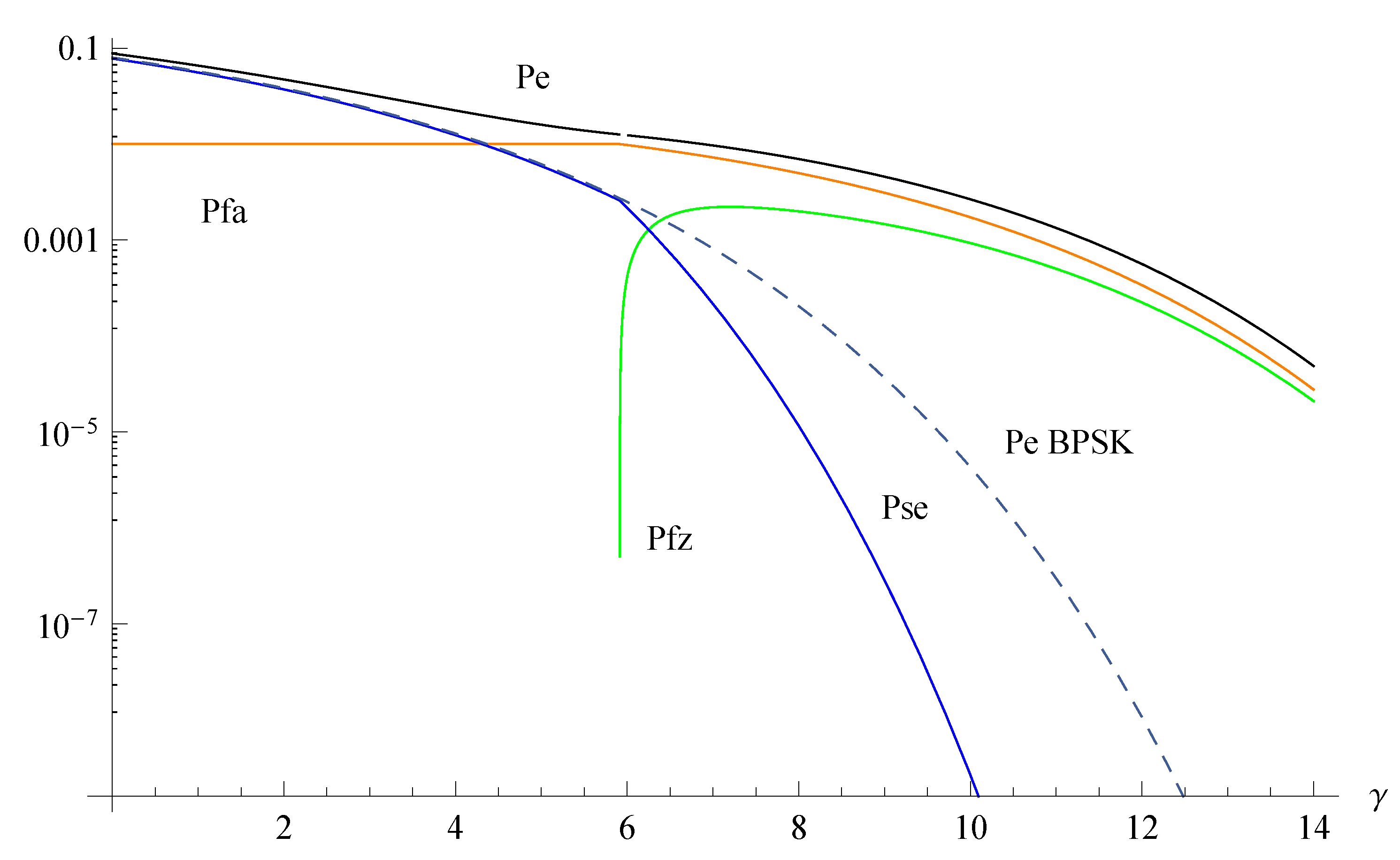
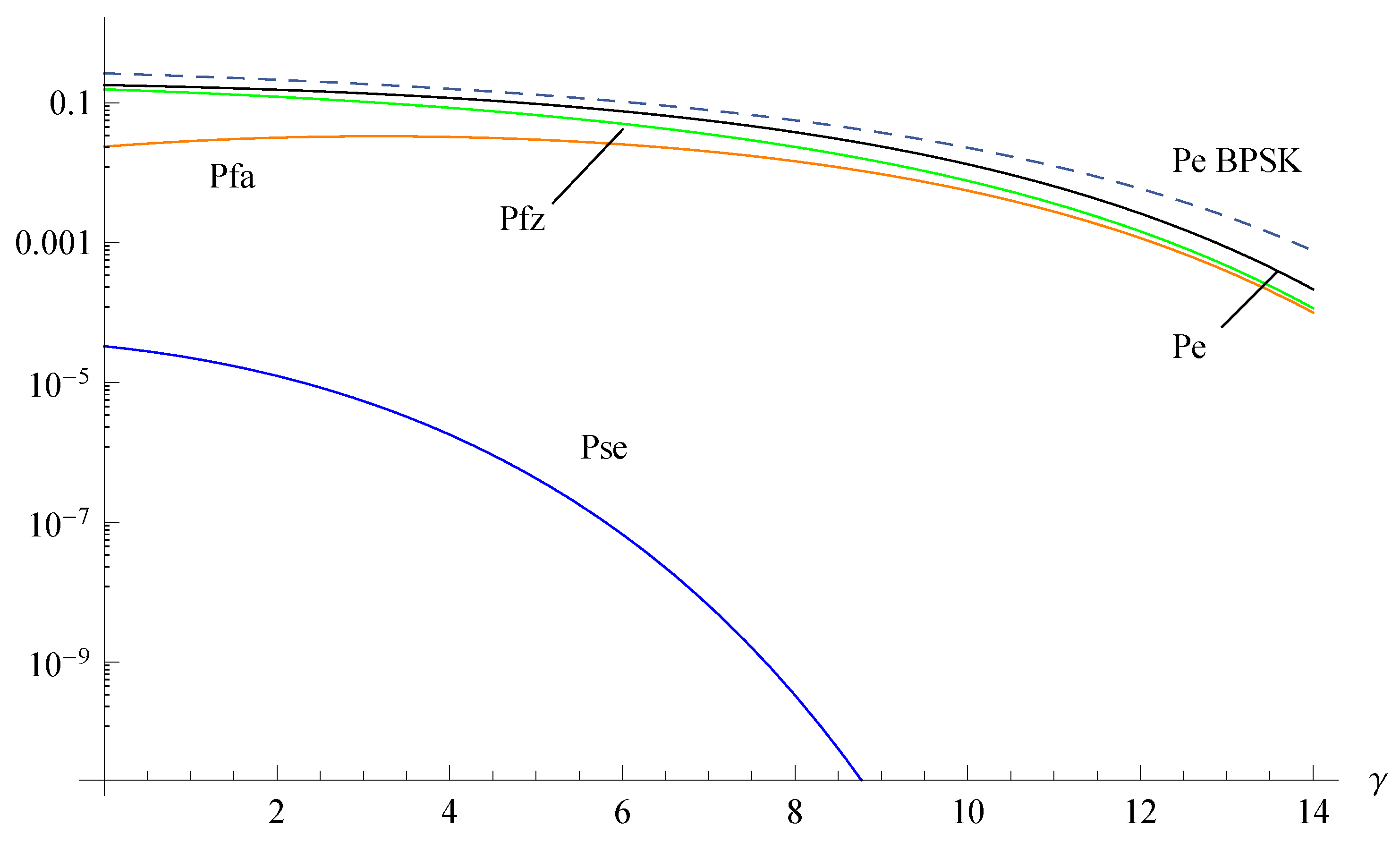

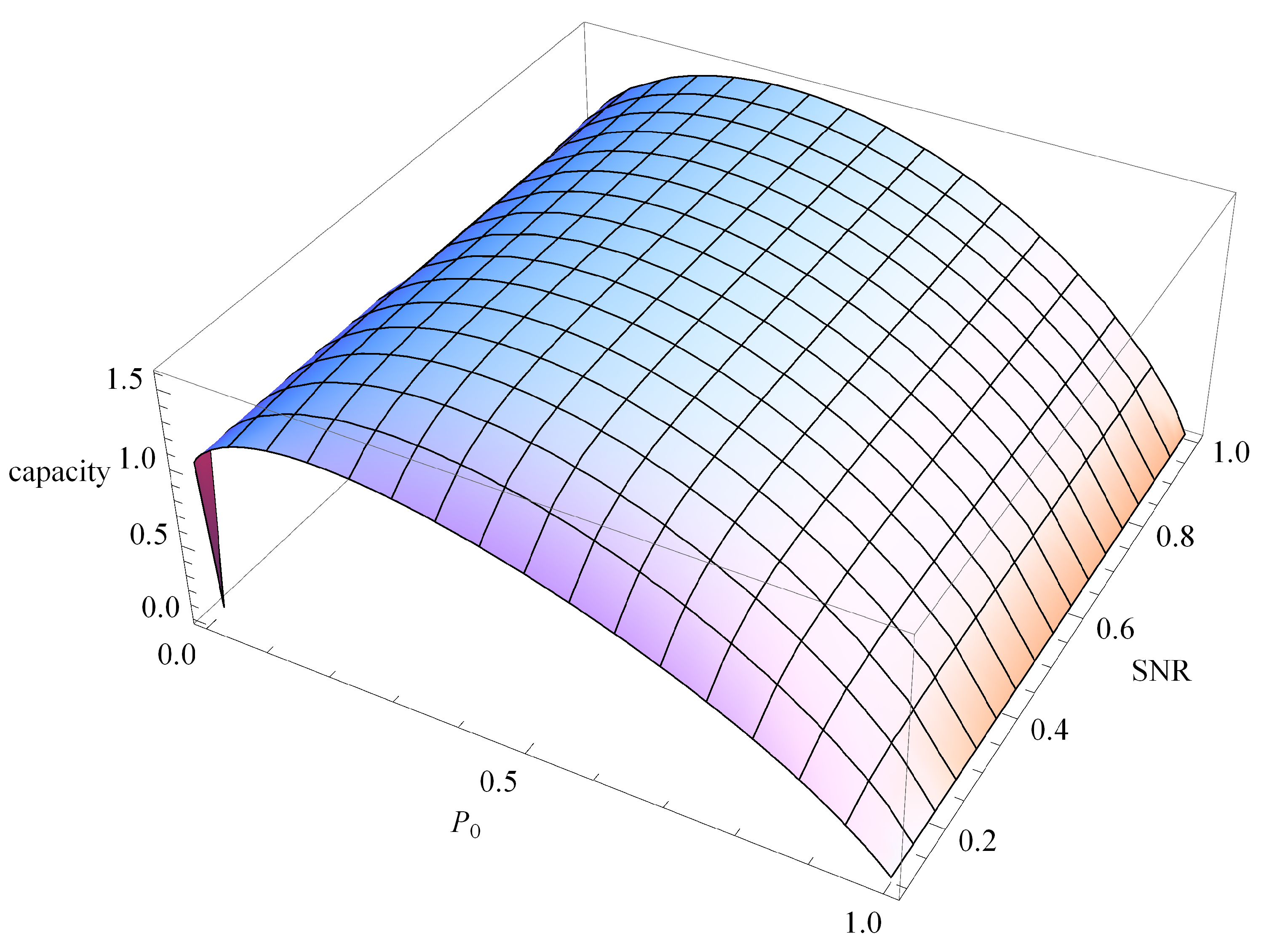

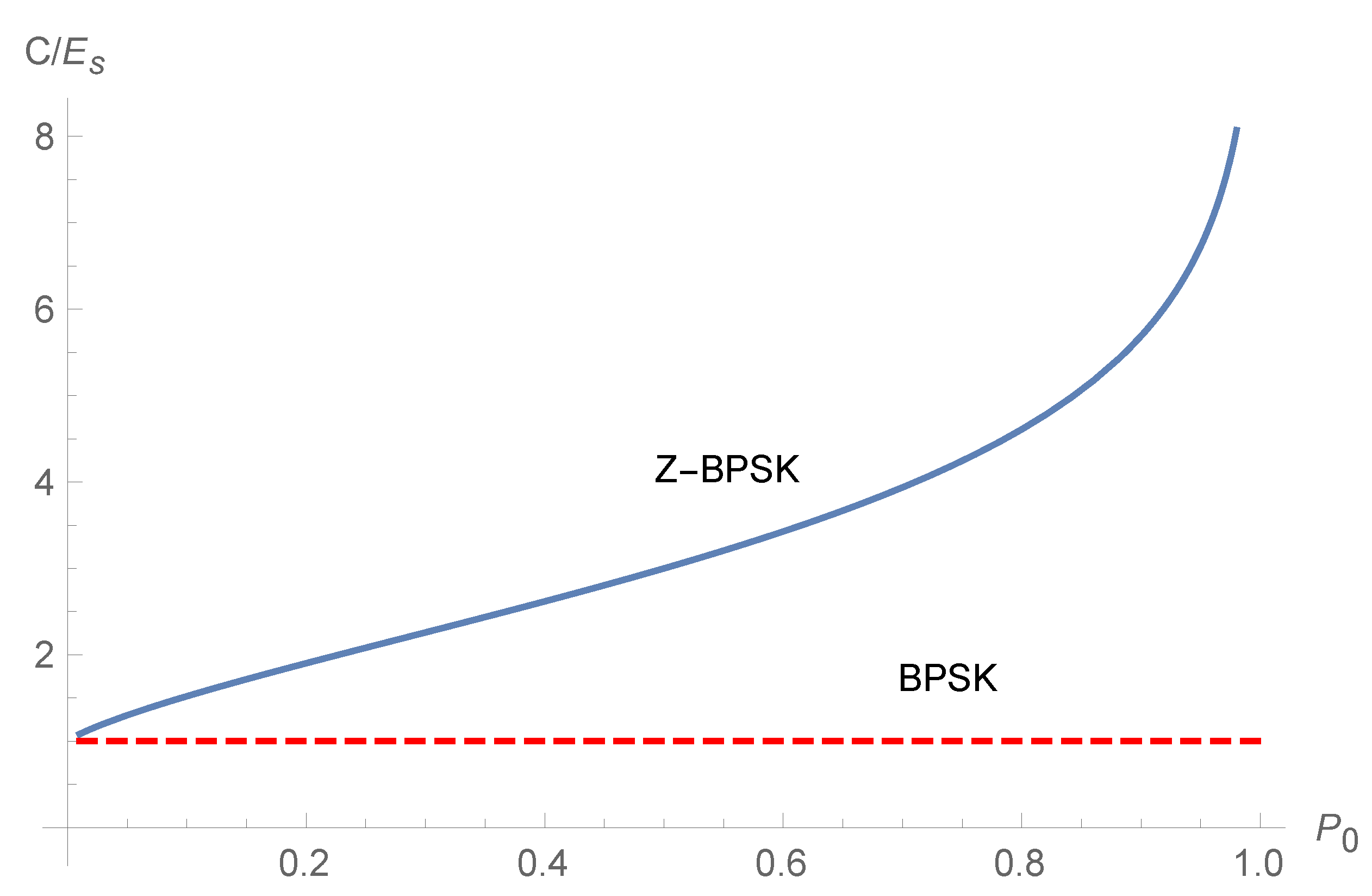
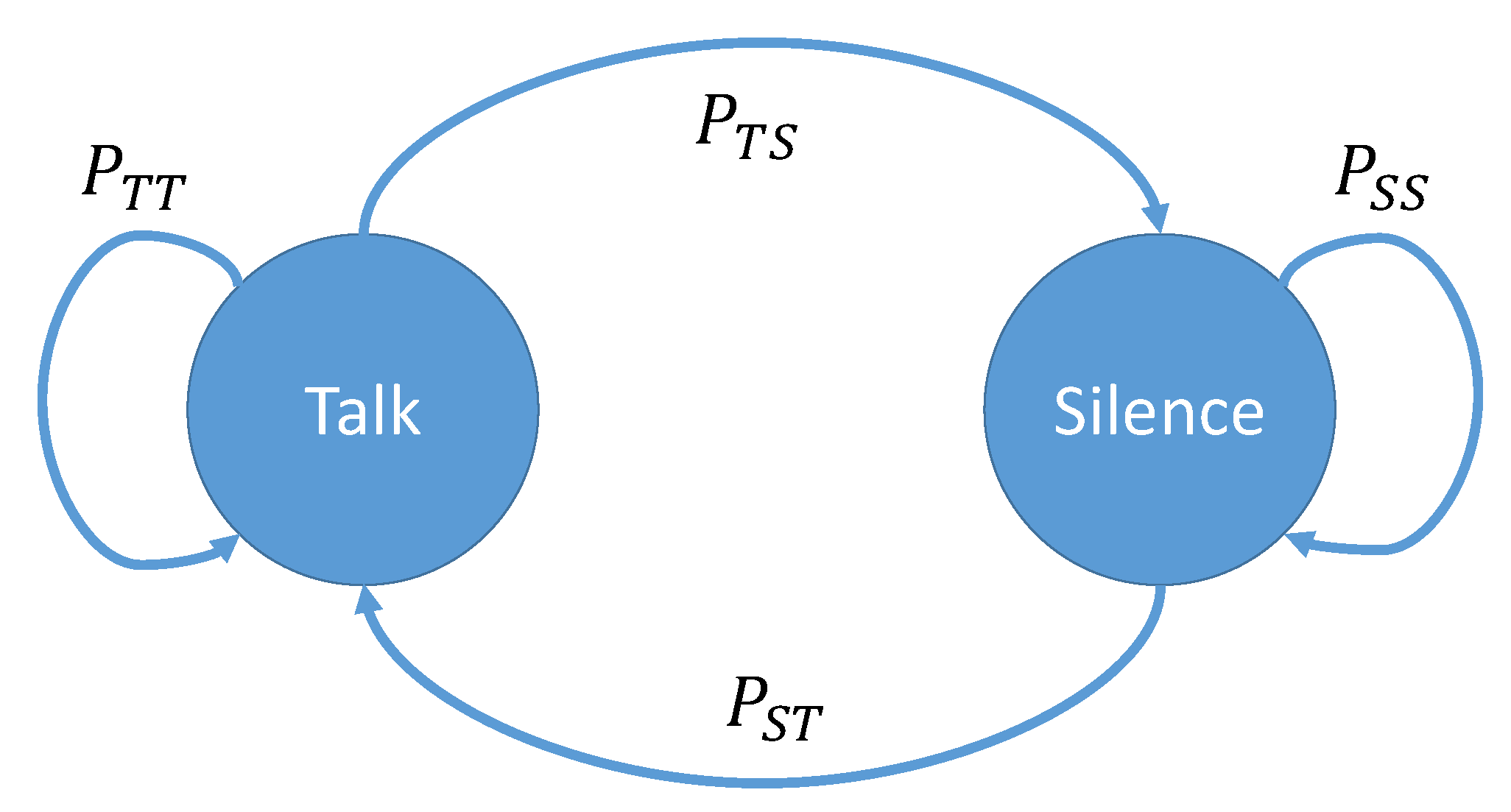
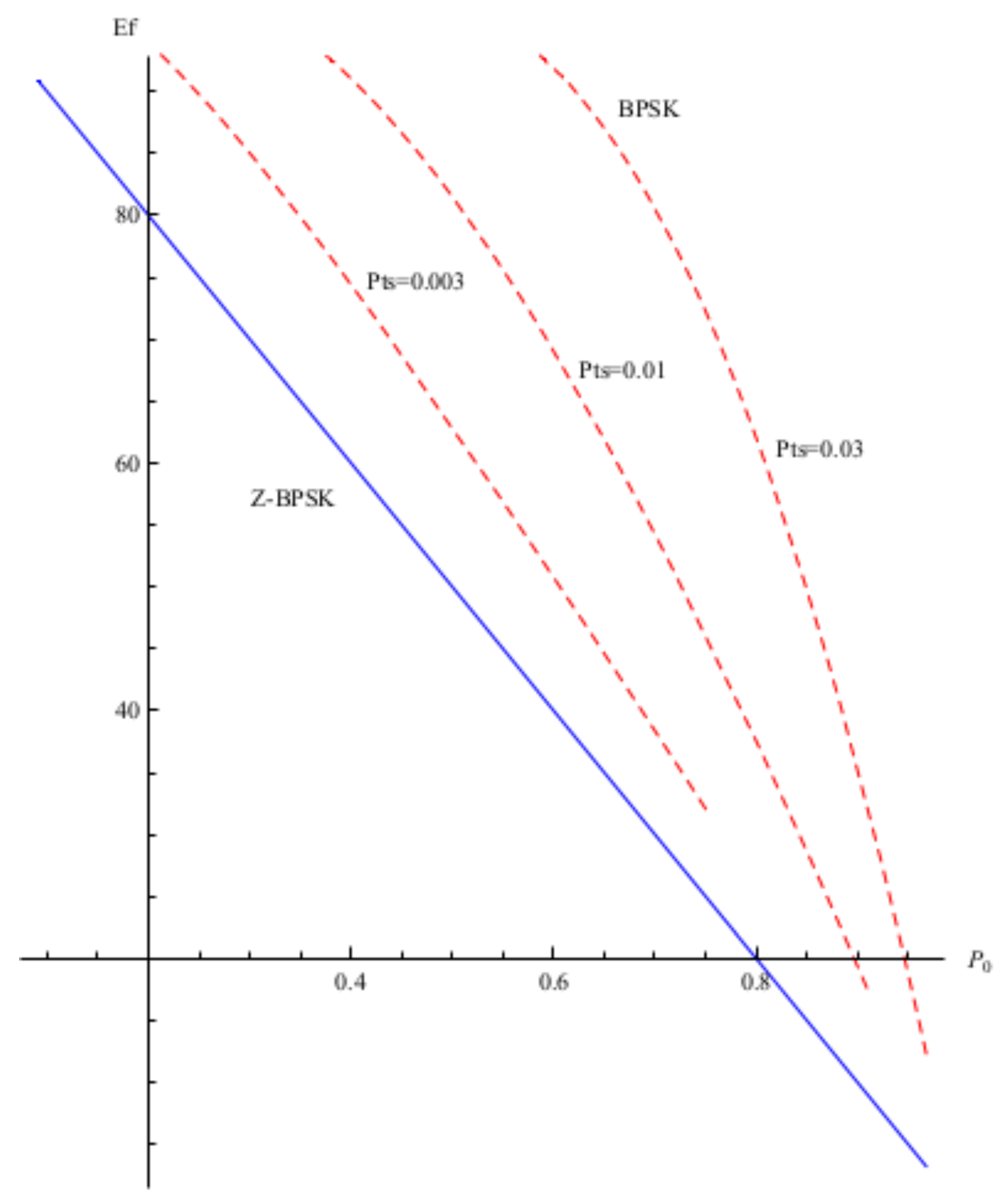
| Sent | Detected | Error |
|---|---|---|
| no error | ||
| false activity | ||
| false activity | ||
| false zero | ||
| no error | ||
| symbol error | ||
| false zero | ||
| symbol error | ||
| no error |
© 2020 by the authors. Licensee MDPI, Basel, Switzerland. This article is an open access article distributed under the terms and conditions of the Creative Commons Attribution (CC BY) license (http://creativecommons.org/licenses/by/4.0/).
Share and Cite
Mucchi, L.; Ronga, L.S.; Jayousi, S. Energy Efficient Constellation for Wireless Connectivity of IoT Devices. Sensors 2020, 20, 3991. https://doi.org/10.3390/s20143991
Mucchi L, Ronga LS, Jayousi S. Energy Efficient Constellation for Wireless Connectivity of IoT Devices. Sensors. 2020; 20(14):3991. https://doi.org/10.3390/s20143991
Chicago/Turabian StyleMucchi, Lorenzo, Luca Simone Ronga, and Sara Jayousi. 2020. "Energy Efficient Constellation for Wireless Connectivity of IoT Devices" Sensors 20, no. 14: 3991. https://doi.org/10.3390/s20143991
APA StyleMucchi, L., Ronga, L. S., & Jayousi, S. (2020). Energy Efficient Constellation for Wireless Connectivity of IoT Devices. Sensors, 20(14), 3991. https://doi.org/10.3390/s20143991






